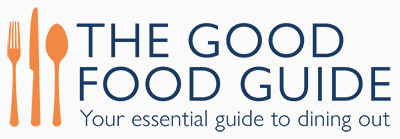Forging a distinctive cuisine has not been easy. Even before its time as a crossroads on the Silk Road, the region was a centre of trade, open to ideas and ingredients from across Europe and Asia. Geopolitical changes have emphasised this, with the country being passed from the Persian empire to the Ottomans to the Russians in recent centuries. The state finally gained independence in 1991 following the break-up of the Soviet Union.
Influences from all these neighbours pepper the cuisine. You’ll find the pickles and sour cream of eastern Europe, but also the yoghurt, bulgur wheat and kebabs (here called khorovats) of the Middle East. Stuffed cabbage might share menu space with dolma, the vine leaves packed with a meaty filling.
Fruit is important, with particular reverence paid to the apricot (‘the world’s best are grown here’, you’ll be told) and the pomegranate (which has become a national symbol; any souvenir shop will be full of pottery versions).

Climate of course plays its part too, and a trip to the street markets shows that the weather in the hot summer and balmy September is deceptive. Fabulous displays of preserved fruit are one of the autumnal highlights at Yerevan’s Gumi Shuka indoor market, with locals squirreling away dried apricots, plums, apples and pears for the coming leaner months. Displays of pickled vegetables, common throughout more northerly parts of eastern Europe, are equally colourful. And sunflowers provide most of the oil for cooking – compared to Mediterranean lands, few olive trees thrive in Armenia’s cold winters, where January temperatures rarely rise above freezing.

Likewise in restaurants: khinkali, the hearty stuffed dumpling dish shared with Georgia, starts to return to menus in the autumn, reminding everyone of the approaching dark nights. Khachapuri is another winter warmer, the irresistible boat-shaped bread served straight from the tonir (a tandoor-like oven). This delight is also shared with Georgia, though in Armenia you might find basturma (dried beef) in the filling, along with cheese and runny egg yolks.
But the bread that Armenians claim for their own is lavash. Bakeries across the country are dedicated to this unleavened flatbread – as thin as a flannel – where purposeful groups of women can be seen kneading and rolling the dough before its briefest of sojourns in the oven. Lavash is versatile: used in wraps encasing herbs, cheese or meat, serving as the base for a plateful of khorovats, and accompanying almost every restaurant meal as a side dish.

Although landlocked, Armenia doesn’t go without fish. Most markets will have tanks of lugubrious live carp, and around Lake Sevan – one of the largest high-altitude freshwater lakes in Eurasia – fresh, meaty trout are sold by roadside traders (elsewhere, these are available smoked at markets).
Meat, though, is the mainstay. As well as juicy skewers of pork, beef, chicken and (surprisingly, to a lesser extent) lamb, you’ll find cheaper cuts in evidence, including cow’s foot in the classic breakfast dish of khash. Here, a broth of long-simmered hoof is presented to the diner with various flavourings (fresh herbs and most notably raw garlic) and dried lavash to be added at table. ‘Pungent porridge’ might best describe the result.

Cheese is also distinctive, whether in looks – the chewy Chechil cheese (smoked or unsmoked) resembles a ball of string – or flavour. Especially powerful is Yeghegnadzor, which is mixed with herbs and buried underground in clay pots for up to a year. Cow, goat and sheep’s milk are all used (the latter two more often in mountain villages), but the common factor in all Armenian cheeses is their high salinity.

No survey, however brief, of Armenia’s cuisine would be complete without mention of its wine. The country claims, along with Georgia, to be the world’s oldest winemaking country, boasting rich reds, full-bodied whites and hundreds of indigenous grape varieties – look for Areni (red) and Voskehat (white).
To learn more about this fascinating cuisine bag a copy of the excellent Armenian Food: Fact, Fiction & Folklore by Irina Petrosian and David Underwood (Yerkir, 2006). And if you fancy sampling the cuisine nearer to home, Manchester’s Armenian Taverna & Restaurant and London’s Erebuni or Jakobs – are all putting the cooking of their homeland on the map.








